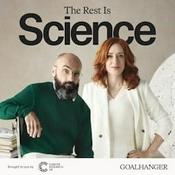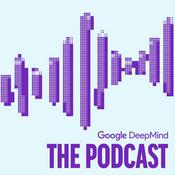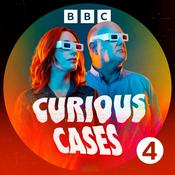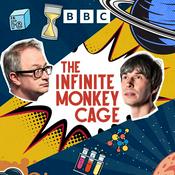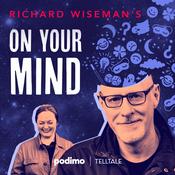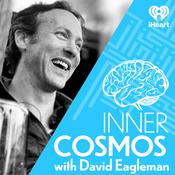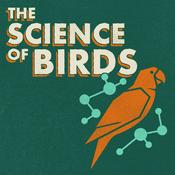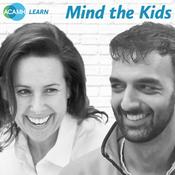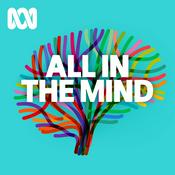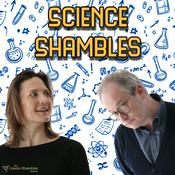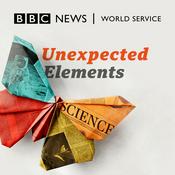Normal Curves: Sexy Science, Serious Statistics

24 episodes
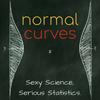
The Batman Effect: Do weird surprises make people nicer?
15/12/2025 | 47 mins.
DescriptionNobody expects Batman—but when he shows up in a crowded subway car, are people suddenly more likely to help a passenger in need? This week on Normal Curves, we unpack a recent quasi-experimental field study involving a caped superhero costume, a prosthetic pregnancy belly, and some puzzled Italian commuters. Along the way, we demystify three common ways of describing effects for binary outcomes—risk differences, risk ratios, and odds ratios—and explain what they actually mean in plain language. We also do some statistical sleuthing, uncover a major problem hiding in the paper’s numbers, and debate what really counts as an effective Batman outfit.Statistical topicsabsolute vs relative effectsbinary outcomescoding errorsdata errors and quality controleffect size interpretationfield experimentsoddsodds ratiospercentage differencesquasi-experimental studiesrisk differencesrisk ratiosstatistical sleuthingMethodological morals“We love an uncluttered paper, but when it's missing the basics, it's like an empty fridge. Clean, yes, but dinner is not happening.”“Before you make a fancy model, make sure the numbers in the table in the text match.”ReferencesPagnini F, Grosso F, Cavalera C, et al. Unexpected events and prosocial behavior: the Batman effect. Npj Ment Health Res. 2025;4(1):57. Published 2025 Nov 3. doi:10.1038/s44184-025-00171-5PubPeer. Comments on “Unexpected events and prosocial behavior: the Batman effect.” Accessed December 2025.Sainani KL. Understanding odds ratios. PM R. 2011;3(3):263-267. doi:10.1016/j.pmrj.2011.01.009Nuzzo RL. Communicating measures of relative risk in plain English. PM R. 2022;14(2):283-287. doi:10.1002/pmrj.12761Sainani KL. How statistics can mislead. Am J Public Health. 2012;102:e3-4.Kristin and Regina’s online courses: Demystifying Data: A Modern Approach to Statistical Understanding Clinical Trials: Design, Strategy, and Analysis Medical Statistics Certificate Program Writing in the Sciences Epidemiology and Clinical Research Graduate Certificate Program Programs that we teach in:Epidemiology and Clinical Research Graduate Certificate Program Find us on:Kristin - LinkedIn & Twitter/XRegina - LinkedIn & ReginaNuzzo.com(00:00) - Intro (03:42) - Why would Batman make people nicer? (07:33) - How they ran the experiment (17:50) - Did Batman save the day? Different ways to answer that (23:00) - What are odds and odds ratios? (30:00) - Where people get it wrong (34:52) - The plot twist: big numerical errors (41:20) - Did men or women give up their seat more often? (43:49) - Wrap-up and methodological morals

Holiday Survival Guide Part 2: The survey study edition
01/12/2025 | 1h 4 mins.
Does the temperature of your coffee six months ago really predict whether you feel gassy today? This week we dissect a new nutrition survey study on hot and cold beverage habits that claims to connect drink temperature with gut symptoms, anxiety, and more—despite relying on year-old memories and a blizzard of statistical tests. It’s the perfect case study for our Holiday Survival Guide Part 2, where we teach you how to talk with Uncle Joe at the dinner table about one of the most common—and most fraught—study designs in science: cross-sectional surveys. We walk through our easy checklist for making sense of results, show how recall bias and measurement error can skew the story, and reacquaint you with nonmonogamous Multiple-Testing Dude, who’s been very busy in this dataset. A friendly, practical guide to spotting when researchers are just torturing the data until it confesses.Statistical topicsConfoundingCross-sectional studiesFalse positivesMeasurement errorMultiple testingPICOT / PIVOT frameworkRecall biasResearch hypothesesSample size and powerSignal vs. noiseSMART frameworkStatistical significanceSubgroup analysesSurvey designTransparency and trustworthinessMethodological morals“When your measurement starts with ‘think back to last winter’ you might as well use a random number generator.”“If the effect is only significant in certain subgroups in certain seasons for certain outcomes, it might just be a bad case of gas.”ReferencesWu T, Doyle C, Ito J, et al. Cold Exposures in Relation to Dysmenorrhea among Asian and White Women. Int J Environ Res Public Health. 2023;21(1):56. Published 2023 Dec 30. doi:10.3390/ijerph21010056Wu T, Ramesh N, Doyle C, Hsu FC. Cold and hot consumption and health outcomes among US Asian and White populations. Br J Nutr. Published online September 18, 2025. doi:10.1017/S000711452510514XKristin and Regina’s online courses: Demystifying Data: A Modern Approach to Statistical Understanding Clinical Trials: Design, Strategy, and Analysis Medical Statistics Certificate Program Writing in the Sciences Epidemiology and Clinical Research Graduate Certificate Program Programs that we teach in:Epidemiology and Clinical Research Graduate Certificate Program Find us on:Kristin - LinkedIn & Twitter/XRegina - LinkedIn & ReginaNuzzo.com(00:00) - Intro (04:36) - Did they have real research hypotheses? (10:29) - Observational or randomized experiment? (20:09) - PICOT and PIVOT (26:20) - Memory problems (32:03) - Five outcomes and measurement problems therein (36:56) - SMART (41:50) - Multiple Testing Dude is having a great time (52:36) - How big is the effect? (59:06) - Wrap-up and Irish Coffee rating scale

Holiday Survival Guide: How to talk about scientific studies around the dinner table
17/11/2025 | 1h 1 mins.
Does a little alcohol really make you speak a foreign language better? This week we unpack a quirky randomized trial that tested Dutch pronunciation after a modest buzz—and came to the opposite conclusion the researchers expected. We use it as the perfect holiday case study: instead of arguing with Uncle Joe at the dinner table, we’ll show you how to pull apart a scientific headline using a friendly, practical checklist anyone can learn. Along the way we stress-test the study’s claims, take a quick detour into what a .04% buzz actually looks like, and run our own before-and-after experiment with two brave science journalists at the ScienceWriters2025 conference in Chicago. A holiday survival guide with vodka tonics, statistical sleuthing, and a few surprisingly smooth French phrases.Statistical topicsAlternative explanationsArithmetic consistency / GRIM testBlindingEffect size / magnitudeGeneralizability / external validityObservational studies vs. experimentsOutcome measurementPICOT frameworkPlacebo and expectancy effectsPrimary outcomes / pre-specificationRandomized controlled trialsResearch hypothesesSample size SMART frameworkStatistical significance (signal vs. noise)Transparency and trustworthinessMethodological morals“You don't need a PhD to read a study. Just remember, PICOT and SMART.”“A decimal point can mean the difference between life and death. Details matter.”ReferencesRenner F, Kersbergen I, Field M, Werthmann J. Dutch courage? Effects of acute alcohol consumption on self-ratings and observer ratings of foreign language skills. J Psychopharmacol. 2018;32(1):116-122. doi:10.1177/0269881117735687Kristin and Regina’s online courses: Demystifying Data: A Modern Approach to Statistical Understanding Clinical Trials: Design, Strategy, and Analysis Medical Statistics Certificate Program Writing in the Sciences Epidemiology and Clinical Research Graduate Certificate Program Programs that we teach in:Epidemiology and Clinical Research Graduate Certificate Program Find us on:Kristin - LinkedIn & Twitter/XRegina - LinkedIn & ReginaNuzzo.com

Shingles Shot and Dementia: Could one vaccine protect your brain?
03/11/2025 | 1h 12 mins.
What do chickenpox and shingles have to do with your brain? This week, we dig into two 2025 headline-grabbing studies that link the shingles shot to lower dementia rates. We start in Wales, where a birthday cutoff turned into the perfect natural experiment, and end in the U.S. with a multi-million-person megastudy. Featuring bias-variance Goldilockses, Fozzy-the-Bear regression discontinuities, a Barbie-versus-Oppenheimer showdown for propensity scores – and the hottest rebrand of inverse-probability weighting you’ll ever hear.Statistical topicsAbsolute vs. relative riskBias–variance tradeoffCausal inferenceCensoringConfoundingFuzzy regression discontinuity designHealthy-user biasInverse probability of treatment weighting (IPTW)Longitudinal studyNatural experimentNegative controlsOptimal bandwidthPropensity scoresSelection biasSubgroup analysisTriangular kernel weightsMethodological morals“Propensity scores are the lipstick you put on observational pigs.”“Natural experiments are a hot flirtation date with causality.”ReferencesEyting M, Xie M, Michalik F, Heß S, Chung S, Geldsetzer P. A natural experiment on the effect of herpes zoster vaccination on dementia. Nature. 2025 May;641(8062):438-446. doi: 10.1038/s41586-025-08800-x. Epub 2025 Apr 2. PMID: 40175543; PMCID: PMC12058522.Polisky V, Littmann M, Triastcyn A, et al. Varicella-zoster virus reactivation and the risk of dementia. Nat Med. Published online October 6, 2025. doi:10.1038/s41591-025-03972-5Sainani KL. Propensity scores: uses and limitations. PM&R 2012; 4:693-97.Detailed Show Notes PageKristin and Regina’s online courses: Demystifying Data: A Modern Approach to Statistical Understanding Clinical Trials: Design, Strategy, and Analysis Medical Statistics Certificate Program Writing in the Sciences Epidemiology and Clinical Research Graduate Certificate Program Programs that we teach in:Epidemiology and Clinical Research Graduate Certificate Program Find us on:Kristin - LinkedIn & Twitter/XRegina - LinkedIn & ReginaNuzzo.com(00:00) - Intro and first gratuitous mention of sex (03:56) - What are shingles, chickenpox, and the vaccines against them? (12:30) - Fun facts about the varicella zoster and herpes viruses (18:00) - A natural experiment in Wales (21:54) - What is the Goldilocks optimal bandwidth? (26:17) - Fuzzy regression discontinuity design demystified (32:43) - Shingles vaccine vs dementia showdown (34:13) - Absolute risk reduction paradox (37:44) - Effects for men and women differ (41:07) - A giant longitudinal study (47:51) - Propensity scores demystified via Barbie and Oppenheimer (53:55) - Using propensity scores to make matches (58:08) - Inverse probability of treatment weighting demystified via more Barbenheimer (01:02:27) - Attempts to rename IPTW for TikTok (01:05:59) - Longitudinal study results (01:10:00) - Smooch ratings and methodological morals: pigs and hot dates

Scary Bridge Study: Can fear make you horny?
20/10/2025 | 1h 4 mins.
What if a haunted house makes your date look hotter? This week we dive into the infamous Scary Bridge Study — the 1970s classic that launched a thousand pop-psych takes on fear and lust. It’s the one with the swaying bridge, pretty “research assistant,” and phone number scrawled on torn paper. The study became legend, but how sturdy were its stats? We retrace the design, redo the numbers, and see how many math errors it takes to sway a suspension bridge. Along the way we find an erotic-fiction writing exercise, Adventure Dudes choosing their own experimental groups, and snarky replicators who tried (and failed) to make fear sexy again. We wrap with what the latest research says about when fear really does boost attraction — and when it backfires spectacularly. A Halloween story of danger, desire, and unconscious sexual drive. This episode has a video version! https://www.youtube.com/watch?v=2coWoS_3460Statistical topicsArithmetic checksChi-square testConfoundersGRIM testInter-rater reliabilityMeta-analysisNegative controlRandomizationReplication Sample sizeSignal vs. noiseStatistical sleuthingSubjective measurementT-testMethodological morals“Those who don't verify their numbers dig their own statistical graves.”“Famous doesn't mean flawless.”ReferencesBrown, NJ, Heathers, JA. The GRIM test: A simple technique detects numerous anomalies in the reporting of results in psychology. Social Psychological and Personality Science. 2017; 8(4):363-369.Dutton DG, Aron AP. Some evidence for heightened sexual attraction under conditions of high anxiety. J Pers Soc Psychol. 1974;30(4):510-517. doi:10.1037/h0037031Foster CA, Witcher BS, Campbell WK, Green JD. Arousal and attraction: Evidence for automatic and controlled processes. J Pers Soc Psychol. 1998;74(1):86-101.Kenrick DT, Cialdini R, Linder D. Misattribution under fear-producing circumstances: Four failures to replicate. Pers Soc Psychol Bull. 1979;5(3):329-334.van der Zee T, Anaya J, Brown NJL. Statistical heartburn: an attempt to digest four pizza publications from the Cornell Food and Brand Lab. BMC Nutr. 2017;3:54. Published 2017 Jul 10. doi:10.1186/s40795-017-0167-xhttp://www.prepubmed.org/grim_test/Kristin and Regina’s online courses: Demystifying Data: A Modern Approach to Statistical Understanding Clinical Trials: Design, Strategy, and Analysis Medical Statistics Certificate Program Writing in the Sciences Epidemiology and Clinical Research Graduate Certificate Program Programs that we teach in:Epidemiology and Clinical Research Graduate Certificate Program Find us on:Kristin - LinkedIn & Twitter/XRegina - LinkedIn & ReginaNuzzo.com(00:00) - Intro: Fear and Flirtation on a Suspension Bridge (05:40) - A Classic 1970s Experiment with No IRB to be Found (11:15) - Adventure Dudes Choose Their Own Bridge (17:00) - The Sexy Story Scale (22:20) - Cool Factor and the Negative Control (28:54) - Grim Reaper Math (36:29) - T-Tests, Chi-Squares, and Shaky Results (42:44) - Electric Shocks and Damsels in Distress (50:49) - Replications and Rejections (58:39) - Wrap-Up, Methodological Morals, and a New Sexy Rating Scale
More Science podcasts
Trending Science podcasts
About Normal Curves: Sexy Science, Serious Statistics
Listen to Normal Curves: Sexy Science, Serious Statistics, The Rest Is Science and many other podcasts from around the world with the radio.net app

Get the free radio.net app
- Stations and podcasts to bookmark
- Stream via Wi-Fi or Bluetooth
- Supports Carplay & Android Auto
- Many other app features
Get the free radio.net app
- Stations and podcasts to bookmark
- Stream via Wi-Fi or Bluetooth
- Supports Carplay & Android Auto
- Many other app features


Normal Curves: Sexy Science, Serious Statistics
download the app,
start listening.
